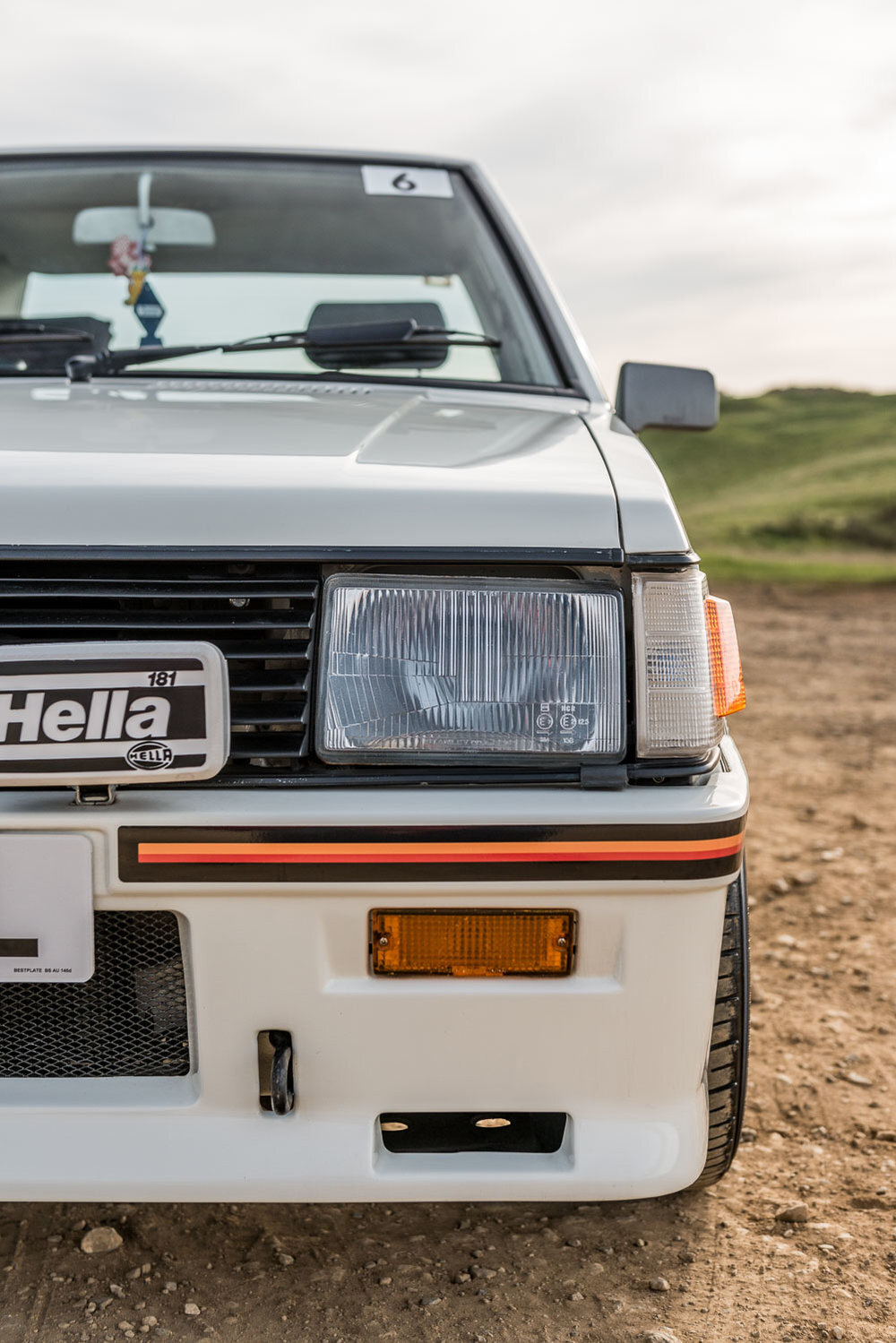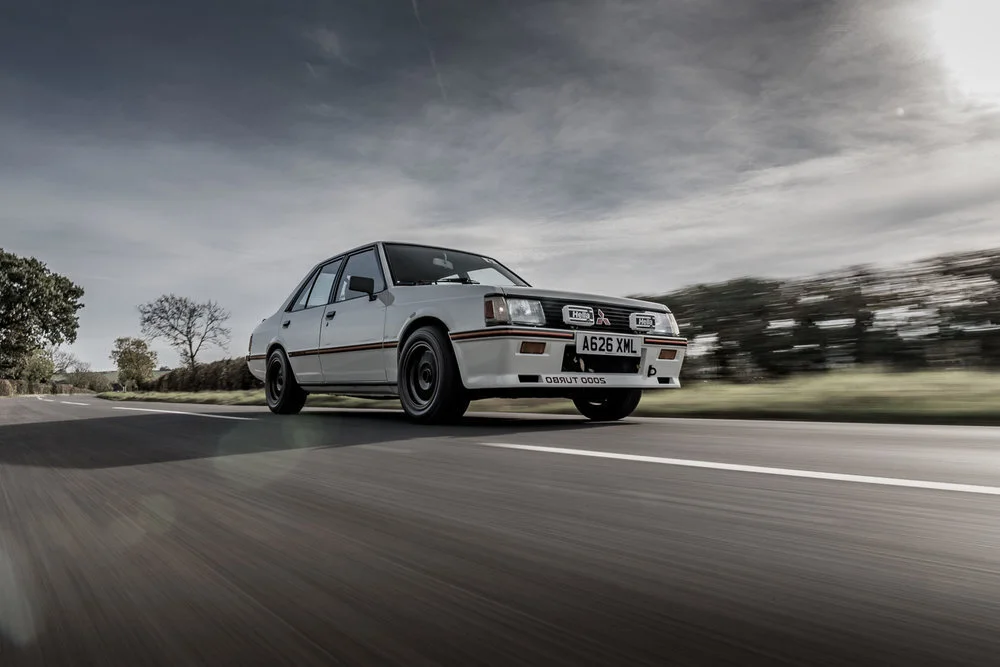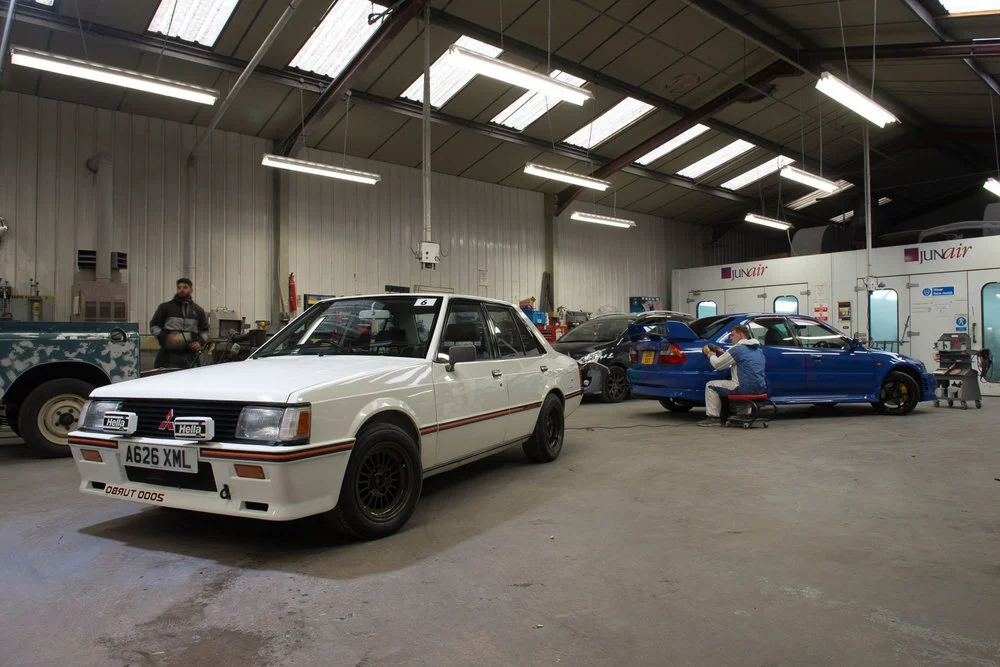This rare Mitsubishi Colt Lancer EX 2000 Turbo was saved from the crusher. We find out why it was worth such huge effort
Words Ross Alkureishi Photography Alex Tapley
On full boost it’s easy to rush changing cogs and graunch the gears, but a steadier hand gives the synchromesh time to work, so you can enjoy ridiculous levels of unobtrusive, axle-tramp-free, velvety smooth thrust. Cheema’s words back at Spa Garage: ‘Everybody who drives one, buys one,’ ringing in my ears as I calm down and the Lancer gets in touch with its more docile side once again.
The original asking price is starting to make more sense, especially when you bring respective power outputs into play. The Lancer lays down a hefty 168bhp compared to its contemporaries: 143bhp for the BMW 323i, 110bhp for the Golf GTI and a paltry 96bhp for the Ford Escort XR3. Of course, the Blue Oval would later go down the turbocharger route with its RS Turbo, but still only manage 130bhp.
After a motorway blitz, during which the Lancer’s sheer pace surprises many a modern machine, it's off towards the Burton Dassett hills near Gaydon to put its handling charecteristics to the test. The Lancer features the same MacPherson strut front and trailing/semi-trailing located live rear axle set-up as a standard 1600 car, but with stiffer springs – hence the in-town harshness – and gas-filled dampers.
Point its snout into a bend and it feels remarkably composed with little body roll, which entices you to power-out early. Very quickly you graduate to shifting down a cog to stay on boost, and charging in harder – it remains firmly unruffled, whereas many front- and rear-wheel drive contemporaries would have you scrabbling to maintain controls and your personal composure. There’s a tendency to slight understeer, but unlike its straight-line experience no rapid change of character. It’s helped by precise steering and larger, Samurai sword-sharp disc brakes, which are ventilated at the front.
Taking in the view atop the Burton Dassett Hills Country Park, I’m a bit confused as the car feels far faster than its stated 0-60mph in 8.6sec stats and popping the bonnet reveals why – a non-standard intercooler and a BBW Motorsport sticker. From new, racing driver David Brodie’s engineering firm could supply upgrades from a Phase One set-up, which offered circa 200bhp, an intercooler, ECU upgrade, modified turbocharger and suspension and cost £1649. Phase Two added to that a gas-flowed and ported cylinder head, BBW camshaft and high-pressure fuel pump, and cost £2100. The big-money Phase Three gave you an engine rebuild, BBW forged pistons and a larger turbo. Cheekily, neither Martin or Cheema mentioned its extra perk. With the measure of the Lancer’s multi-faceted character, the return journey is an absolute joy. When the road opens up ahead there’s no point in resisting the temptation to boot it, and integrating a boost-gauge glance into your cornering technique greatly enhances your ability to skewer apexes. It’s an epic sleeper for a Sunday morning blast.
Back into town and it’s time to relax, give way to those of a more rushed disposition and, as the typhoon of performance falls away, allow the Lancer to return to a state of nondescript suburban Zen.
'We must have had a dustbin full of rust 'Poor parts supply and epic rust meant that the restoration took four years, ‘Bodywise it’s easier to tell you what I haven’t replaced on the body, rather than what I have,’ says Martin. ‘The car was scrap, but importantly it had an original and complete interior.’
The poor parts availability was a key factor in the restoration, as was the fact that he had a donor car. ‘We chopped up the black car and kept the good bits. You can't get new panels, so for other parts I re-fabricated them using the black car as a template.’ Rust is the enemy of this generation of Lancer. In his parts hoards Cheema had complete outrigger chassis legs that had never been on a car. ‘They were shot-blasted and painted, and three holes appeared before we got the chance to fit them.’
When the Lancer was first put on the ramp, the triangular plate joining the front panel, wing valance and outer drop wing valance simply fell off. ‘We removed the whole front end from the bulkhead,’ says Martin. ‘We must have carried a dustbin full of rust and scrap. The chassis was opened up and rebuilt inside, before being put back together and new front panel valances made.’
Martin wanted to ensure that any repairs were invisible, with meticulous attention to detail. ‘I had rear suspension turrets made, but they were hit and miss, so I made my own.’
Even where parts were available, ordering them was difficult because Mitsubishi require a parts number and records in Japan are held on microfiche. 'It's one of the reasons that the restoration took so long; it sat on my ramp for a year, while I looked for dampers. I ordered two from Mitsubishi, and they sent me one – the last in Japan.’ Cue an internet hunt, which turned up one in Coventry.
‘For convenience's sake, we fitted a spare Starion engine, but we still have the original,’ says Cheema. Getting the new engine running smoothly was hard. ‘It’d run fine and tick over, but then wouldn’t rev. All we got from Cheema was “it’s the fuel pump, it’s the fuel pump” for months,’ laughs Martin. ‘We tried changing the fuel pump but it still didn’t work. Apprentice Lewis Checkley found a loose wire coming out of the ECU, but to this day it’s still “the fuel pump”’.
Mitsubishi Colt Lancer Turbo 2000 (standard)
Engine: 1997cc/4-cyl/SOHC
Power: 168bhp @ 5500rpm
Torque: 181lb ft @ 3500rpm
Maximum speed: 124mph
0-60mph: 71.sec
Fuel consumption: 22-30mpg
Transmission: RWD, five-speed manual
HOW MANY LEFT? 14 (UK)
WHAT TO PAY?
Concours: £15,000
Good: £12,000
Usable: £8000
Project: £2000













